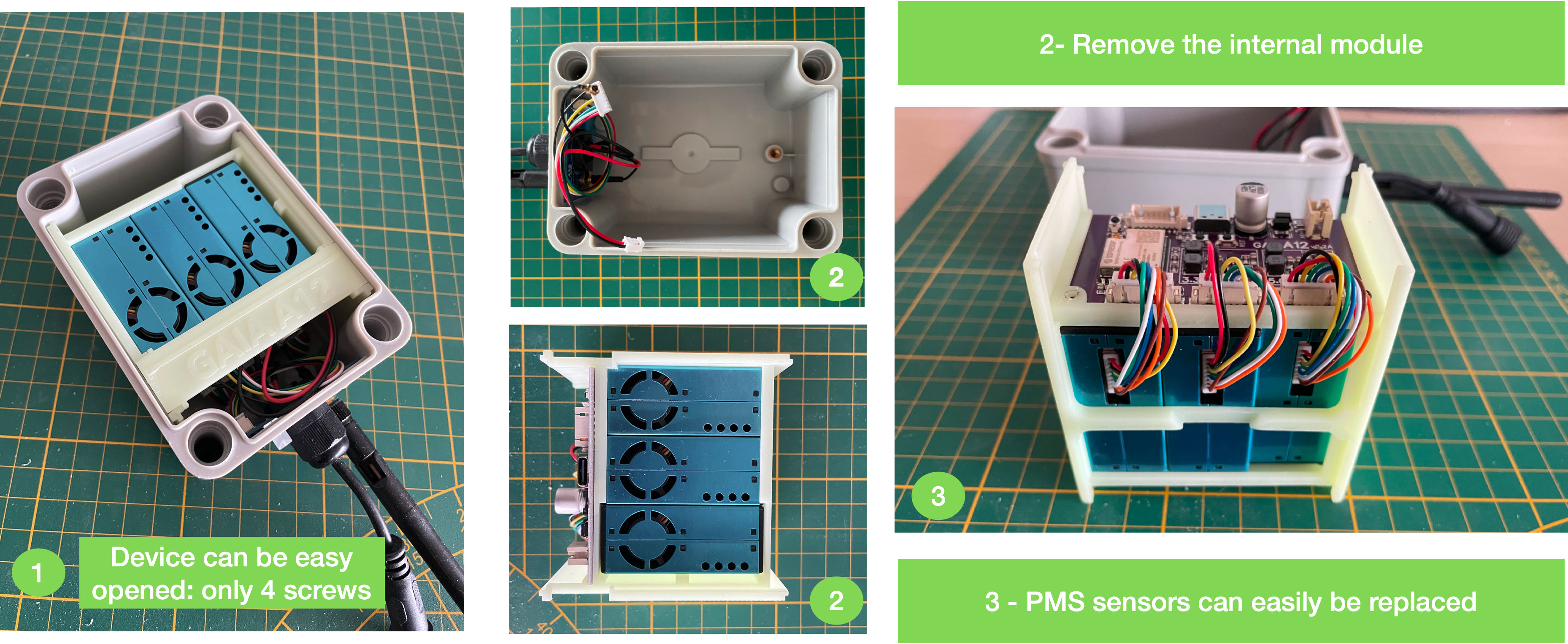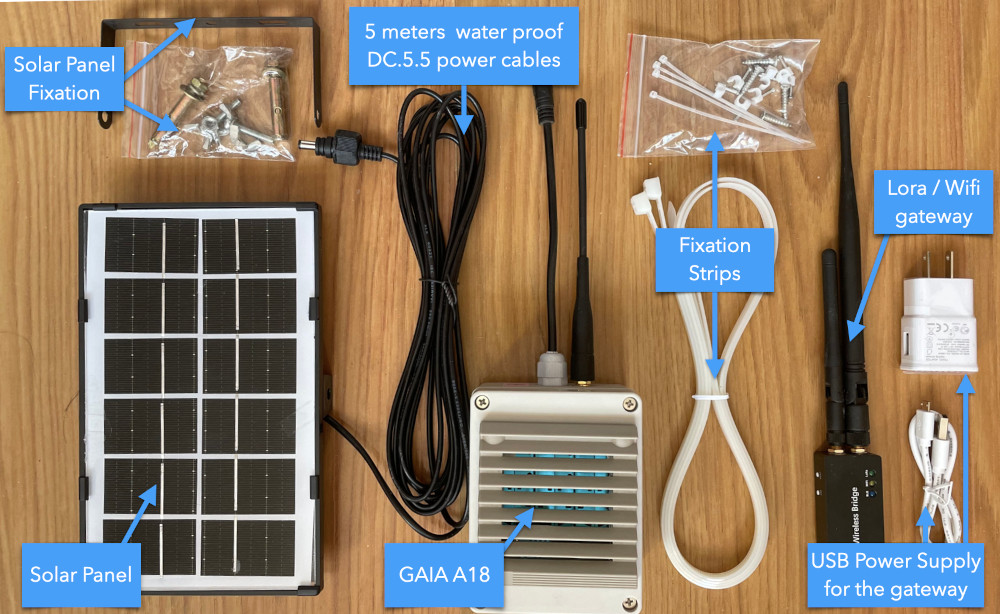Gaia A12 compared to Purple Air
Actually, the most important difference between the Purple Air and the GAIA is that with the GAIA station, you own the data, and it is completely free to access both real-time and historical data from our servers. While for purple air, you must first pay for the device, and then also pay to access the data from purple air API server!
--

The Gaia A12 and Purple Air monitoring stations both use the same internal dust sensors (PMS5003). But the GAIA A12 has many advantages compared to the Purple Air:
Gaia uses 3 redundant dust sensors, while Purple Air has only 2: The reason for using 3 redundant sensors is that, when one sensors fails, it is possible to know which one. In the case of purple air, with only 2 sensor, it is not possible to know which one fails, thus making the Purple Air data useless.
Gaia has more data than Purple air: For each sample interval (1 minute), you get the minimum, maximum, standard deviation, average and median for for interval. Purple Air only provides the average value of 2 minutes. With this additional data, you can get much more reliable information about the sensor data quality.
Gaia last longer. The GAIA station uses 25% duty cycle for dust sensors (active 90 seconds every 6 minutes), while Purple Air is using a 50% duty cycle. This means that the reading accuracy from the Purple Air quality decrease at least twice faster over time.

Gaia has a better mechanical design, with a vent cap, which protects the sensors from direct wind and rain. The purple air does not have any cap, so the wind can bias the readings on the Purple Air.
Gaia station cost $200, while the basic Purple Air costs $229. And for $200, you get 2x5 meters water proof power cable and the power supply for free, while for purple air, you need to pay an extra 40$ (ref).
The GAIA station sensors can be replaced by anyone. While for purple air, only the high-end $300 version supports user replaceable sensors.
The GAIA station has an external omnidirectional antenna. The external antenna performance is much better than the internal directionally antenna used by purple air. And using an external antenna, it is possible to use high gain antenna.
GAIA A12 mechanical design:

GAIA A12 internal design:

GAIA A12 Items included for $200 USD:

Note that the USB charger included in the package is customized according to the region you are in.
Gaia A18 compared to ...
The GAIA A18 is a a unique design with a solar power and long distance radio, allowing to operate the station in remote area where either WIFI or power supply is not available.
The GAIA A18 has all the same advantages of the GAIA A12 compared to the Purple Air: 3 redundant sensors, vent cap mechanical design, water proof power connectors and cables, maintainability, etc..
The GAIA A18 costs $350 USD for the Solar + LoRa version, and we do not know of any competitor in this price range. At higher price range, you can find the clarity Node-S at an expected 1300$ USD.
GAIA A18 Items included for $350 USD:

--
